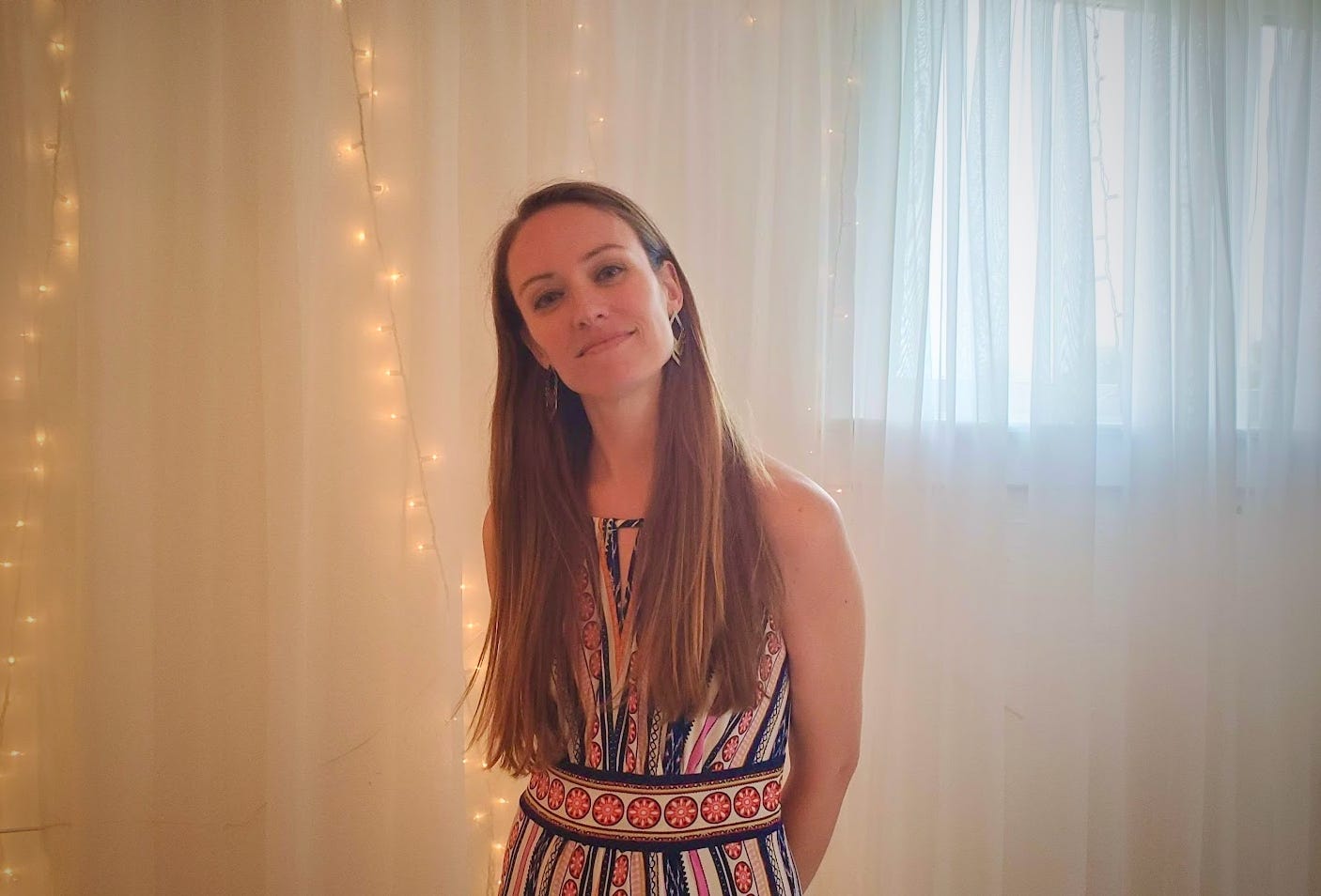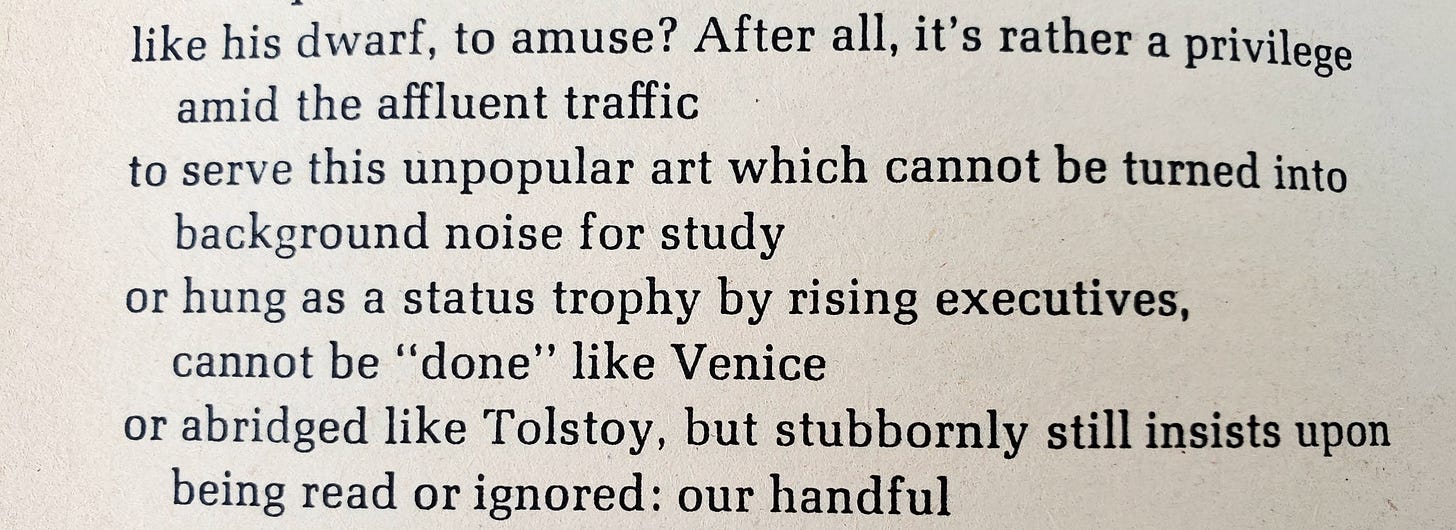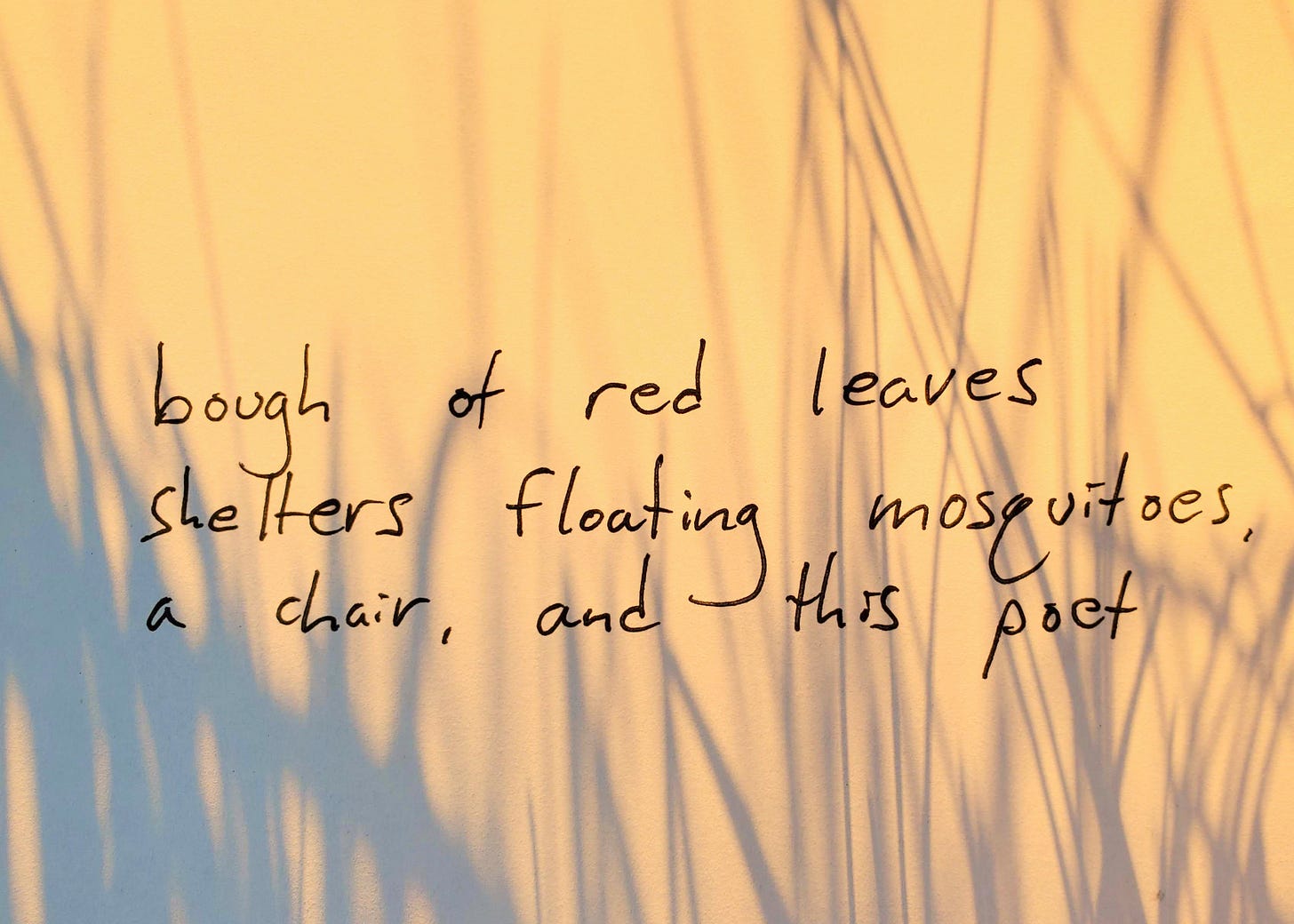Welcome to Selected Poems. Here you will find a selection of my poetry—mostly free verse and Japanese poetic forms such as haiku and tanka, and mostly focusing on my life here on a small farm / homestead in Southeastern Michigan.
I’ve provided a more in-depth introduction to myself and my writing below, but the best introduction is likely to be the work itself. If you are inclined in that direction, I would recommend starting with a seasonal selection of haiku or one of my free verse poems.
About Me
I believe that poetry, like all art, is contextual. It comes from a human body in a specific place at a specific time. And so—hello! My name is Julie Hiller. I am a middle-aged, lifelong midwesterner currently living on a small farm/homestead just outside of Ann Arbor, Michigan with my husband, our whippet Virgil, a flock of laying hens, and as many plants as I can manage to tend and grow.
For about 15 years, I worked in the software industry as an engineer and eventually engineering manager before a series of chronic injuries, most notably a severe neck injury, required that I abandon the keyboard and focus on my physical health. Probably this was for the best—my heart was never truly in corporate software development. Rather, my heart has been in what I do on my homestead and what I am doing here—writing poetry.
About My Writing
About Poetry
Among my favorite characterizations of poetry as an art form are the following lines from Auden’s elegy “The Cave of Making.”1
... After all it's rather a privilege
amid the affluent traffic
to serve this unpopular art which cannot be turned into
background noise for study
or hung as a status trophy by rising executives,
cannot be "done" like Venice
or abridged like Tolstoy, but stubbornly still insists upon
being read or ignored.In the past, when I’ve tried to explain this thing that I am doing—writing, reading, doting upon and being ensnared by (and so, loving) poetry I have often landed on expressing the same idea Auden is getting at above by saying this—that Poetry is transcendental. I think that one word gets to the heart of the matter. Poetry cuts right through the bullshit. I never feel I am speaking more honestly or authentically than when I am writing poetry. Why is this? The answer, I think, comes straight out of the fundamentals of the form itself. Poetry is not the art of the eye or the ear. It is the art of words, which are a uniquely human invention. Poetry is in its essence a reminder that language itself—this elemental thing that is the bedrock of human culture and which shapes nearly every moment of our outer and inner lives—is this a bizarre, constantly-evolving thing that we are all collectively doing.
Perhaps this is all coming off a bit high falutin. My intention here, after all, is to introduce and characterize myself as a poet. While it is true to say that I have enlisted myself among the ranks of those who still stubbornly insist upon being read or ignored, a more straightforward approach might go as follows: I started writing poetry in fourth grade when my teacher, Mr. Foote, first introduced me to it and I haven’t really stopped since. I am a great lover of literature and have pursued it throughout my education. I hold a B.A. in English literature from the University of Michigan and an M.A. in English literature with a focus on poetry from the University of Illinois, Chicago. I have had poems published in the 3288 Review and the American Journal of Poetry. I have worked for the City of Chicago in their publishing arts program and as a reviewer for Booklist magazine. I have one completed manuscript I am currently submitting for publication, another manuscript in the works and of course the many individual poems you can find on this website.
About Substack
If the above explains why I’m writing poetry in general, a few words need to be given to why I am writing poetry here in particular—on the internet and on Substack. The world already has, after all, a number of established places for poetry to appear: books, dedicated journals, and other periodicals that see fit to include poetry within their pages. Why not just stick with these? There is a short and a longer-winded answer to this question. Briefly, The internet is where much of our attention rests much of the time. The people are here, and so here is where I’m writing.
The less concise answer to this question has much to do with the nature of publishing and poetry readership in general. On the whole, people are spending less time reading for pleasure, and this impacts poetry as much as any other written work. Perhaps more. Perhaps much more. Volumes of poetry rarely dominate the best seller list. Nearly all poets can be virtually assured that their work will never be widely read, and this is especially true at this moment in history. Given this environment, it is very difficult to get published via any traditional means. Poets find themselves, myself included, mass-submitting their work to journals and publications with little hope of success. I’ve known publishers and editors who have lamented the sheer volume of high quality work they receive that they simply cannot publish. Perseverance is certainly a virtue, and none of this is to say that poets and writers should stop submitting their work or that publication via traditional methods is impossible, however given the current environment I believe it simply makes good sense to pursue other models of disseminating one’s work. In that spirit, I’m giving this place a try.
Plus, putting all of that aside, I think the internet could use a little more poetry.
About Subscriptions
Subscriptions are a way to support me and my work. Any support you are able to provide is hugely appreciated. All content on this site is currently free, and I will provide an update here if that changes.
If enough support is generated via subscriptions, I hope one day to provide printed versions of the work appearing here. All Founding Member subscribers will receive any printed works I release on this platform for free.
About Form
Most of us have a preconceived notion of what poetry is. For contemporary readers, this likely (though by no means certainly) looks like the kind of modern free verse that frequents the pages of publications like Poetry magazine and is written by many well-known contemporary poets like Mary Oliver or Kay Ryan or Billy Collins. Much of my poetry takes this shape, and I’m indebted to the many poets who came before me whose innovations crafted modern free verse into what it is today.
Sometimes, however, I find myself wanting to express an idea or a moment in a very different, and ultimately much more rigid form, and this is when I turn to haiku.
About Haiku
I suspect most western readers will have, as I did, encountered haiku at some point in their primary or perhaps secondary education. My own scholastic introduction to the form left me with the impression that haiku was neat, but ultimately a bit archaic and overly simplistic, like a kind of verse that had training wheels screwed onto it. Real poetry, I thought, wasn’t constrained by outmoded structural requirements like meter or syllables or rhymes or line counts.
Then, in my mid-30s, an interesting thing happened to me. I was going through something of a rough patch in life and began practicing meditation for stress reduction. This paved the way to an informal study of Buddhist philosophy which eventually led me to reading and delighting in haiku. The rules of the form no longer seemed restrictive to me, instead they seemed to provide a solid foundational structure onto which beautiful and concise art pieces could be constructed. Since that time I have regularly written haiku, senryu, and tanka, adhering to the forms in the way that seems most suitable to me, as all non-Japanese-speaking haiku writers must do. Below I will try to outline the most important elements of the structure I try to embrace with my own haiku as a way of providing some necessary context for my work.
I primarily write haiku (and senryu, which I often call haiku out of laziness) in the 5-7-5 form, using English syllables in place of Japanese onji. Occasionally I will write a more concise 3-5-3 structure. When I need more room to express an idea, I use the tanka format: 5-7-5-7-7, with the last two lines functioning something like the couplet at the end of a sonnet.
Traditional haiku attempts to capture a scene that has evoked an emotion or realization in the writer in such a way that the reader will also have that same emotion or realization evoked in themselves. That is my goal with my own haiku. The best haiku are also densely layered with meaning, with much of that meaning being informed by Buddhist concepts such as interdependence, impermanence, suffering, and the transcendence of that suffering. I also attempt this, with particular focus on concepts like aware (a quality of sadness / pathos triggered by an understanding of impermanence), sabi (loneliness or the Buddhist concept of emptiness), and karumi (lightness or homey-ness). I frequently employ the structural technique of combining two different scenes or stories and I am fond of using an English version of kireji (a cutting word or punctuation that joins the two). I write haiku seasonally, both in that I try to evoke the seasons to give the poems a sense of real place and time and I divide my collections of haiku up seasonally. More on this below.
About Seasons
I think we are collectively suffering from the loss or at least a drastic reduction of the impact of seasonality in our culture. I felt this myself acutely before we moved to our farm and before I began writing haiku. It’s all too easy when sitting inside a climate-controlled house or office in front of the digital monotony of a screen to forget that seasons even exist, or to remember them only in some kind of abstract, slimmed-down, consumeristic version of what they truly are. Seasons structure life. For much of human history, seasons dictated nearly everyone’s daily activities. As a gardener and homesteader, I am keenly aware of this. The real world, the one beyond the screen, is a constantly changing series of micro seasons that affects every living thing, including us.
As a way of returning this fundamental structure to its rightful place, I mark time by the seasons. I use astronomical seasons, which means I base the seasons around solstices and equinoxes. I usually further subdivide each season into three sections (early, middle, and late) that span between 4-5 weeks. I find this method corresponds relatively closely to the micro seasonal variations I see throughout the year here on our homestead. When I publish collections of haiku and short poems, I divide them up in seasonal groupings.
About Collaboration and Community
If you are a poet, reach out. I’d love to read your work, talk about poetry, and build community.
If you are an artist and would like to work with me, reach out. I’m open to many different forms of collaboration.
Much has been made of the death of poetry, yet I can say in this little corner, in this one person, it is alive and well. Language is a uniquely human art and skill and poetry is the art of language in its most pure form. In her poem “Wild, Wild” Mary Oliver once wrote: “Wild sings the bird of the heart in the forests of our lives.”2 To borrow, and perhaps stretch to the breaking this wonderful line—if all the language of this world makes up a great forest, into its hysteria and its mundanity we poets are wildly singing. I count myself one bird in that great chorus.
W.H. Auden, Selected Poems (New York: Vintage Books, Random House, 1979), 256
Mary Oliver, Devotions (New York: Penguin Press, 2017), 156





